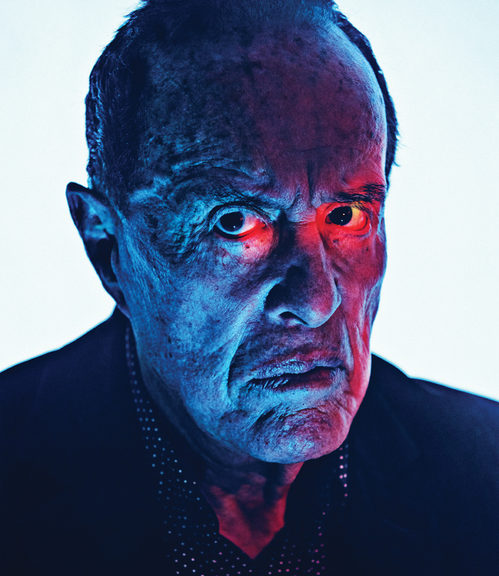KENNETH ANGER, American Underground Filmmaker, born; One of America’s first openly Gay filmmakers, and certainly the first whose work addressed homosexuality in an undisguised, self-implicating manner, Kenneth Anger occupies an important place in the history of experimental filmmaking. His role in rendering Gay culture visible within American cinema, commercial or otherwise, is impossible to overestimate.
In 1947, Anger gained instant notoriety with Fireworks, a homoerotic nightmare/reverie in which a muscle-bound sailor enjoys posing for the protagonist’s (Anger’s) delectation, but then, with four others, bashes the youth in a public restroom. Despite the horrific scenario, the ending suggests redemption with milky fluid spattering Anger’s body, a sympathetic sailor’s crotch spewing white sparks from a Roman candle, and Anger resurrected, wearing a flaming Christmas tree headdress.
Some early Anger works never made it to the controversial screening stage because negatives were confiscated and destroyed by self-policing labs to which he had sent film for processing. Conversely, other viewers were overly appreciative of Anger’s eroticism, pirating and showing his films in nightclubs during an era when Gay porn was largely unavailable.
Similarly, the pervasiveness of iconic Gay imagery in Anger’s work, such as the leather-clad bikers of Scorpio Rising (1963), often caused his films to be grossly oversimplified as depictions of homosexual “pathology,” rather than understood as critiques of American mass culture, particularly as it was propagated by Hollywood movies and the rock-and-roll music that Anger used for his soundtracks in pioneering ways, critically anticipating the music-video genre.
In unfinished film projects such as Puce Moment (1949), with its close-up sequence of women’s gowns, and Kustom Kar Kommandos (1965), in which a youth caresses a hot-rod with a powder puff, Anger inventories American culture’s most fetishized objects, evoking a profoundly camp sensibility. Elsewhere, in Eaux d’artifice (1953), whatever Gay content does exist–Anger cites Ronald Firbank’s novel Valmouth as inspiration and has likened the fountain imagery to sexual watersports–is subordinate to the film’s elegant visual abstractions.
Although Fireworks and Scorpio Rising had earned him a reputation as an underground Gay filmmaker, through the late 1960s and 1970s, Anger’s films expressed less specifically Gay content. His longtime fascination with the writings of occultist Aleister Crowley, which had imparted a dark, ritualistic atmosphere to even his earliest films, propelled works such as Invocation of My Demon Brother (1969) and Lucifer Rising (1973). Collaborative projects with Mick Jagger and Led Zeppelin’s Jimmy Page recalled Anger’s earlier professional engagements with Jean Cocteau, Anaïs Nin, and other iconoclasts, but the results fell short of Anger’s expectations and, indeed, abilities.
Through the 1980s, Anger became known to a broader public through the film adaptation of his lurid book Hollywood Babylon (1958), which chronicled scandals of the film industry. Hollywood Babylon is, in essence, a counter-accusation of indecency and intemperance against America’s self-righteous film establishment, an institution that at mid-century was so fearful of scandal that only underground filmmakers risked depicting overtly sexual content and exploring radical cinematic forms.
